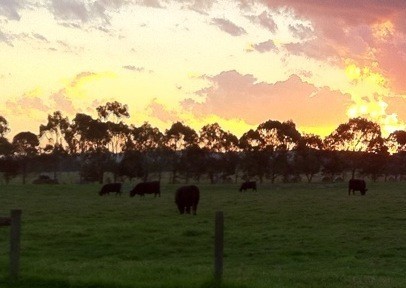We are pleased to repost (with permission) Phil’s blog today from down under talking about “The Problem of Self-Sufficiency” in the cleverest of ways.

Posted on November 21, 2011 by phil
I recently said to a work colleague that I was “heading down the self sufficiency path” (or words to that effect) with my farm. He replied with a smile “Hah, that’ll never happen!” So my workmate sees self sufficiency as a binary state, and I suspect many others do as well.
In an episode of the survival podcast, Jack Spirko explained concept of self-sufficiency as something measured in a percentage, whilst self reliance was something you measured in time. So for example, if you have a certain amount of food, water, and fuel stored, you may be self-reliant for a week or a month. On the other hand, if you have a few garden beds and perhaps some chickens, you might be 10% self sufficient.
The problem was that my workmate sees self sufficiency as a binary state, and I suspect many others do as well. It’s not really surprising, given the word itself – it is a binary statement! If an engineer built a “self supporting structure”, you would not expect that 90% of it’s load would be borne by something else!
When I said I was heading down that path, I was trying to impart a sense of that percentage in my phrasing; clearly in that instance, I failed miserably. I think that the word “homesteading” is better, since it speaks more to the intent of what I’m trying to do. The problem is that the average Australian has never heard of that word before, so it’s not much help to me.
I have gotten into even more trouble trying to explain my efforts as a form of superannuation (a non-fiscal 401k for any Americans out there). Neatly, before I heard Jack Spirko talk about percentages I was using those concepts to try and explain how farming was a form of superannuation… although that didn’t really go well either, since most people have very fixed views on these things.
Me: “The way I see it, my farm is a form of superannuation”
Them: “You’re better off investing in suburban real estate”
Me: “No, I don’t mean as something I can sell”
Them: “Well if you can’t sell it, how is it of any value?!”
Me: “It can produce food”
Them: “There’s no money in food”
Me: “No, I don’t mean as something I can sell”
Them: “Well if you can’t sell it, how is it of any value?!”
And so on it goes. By my way of thinking, every percentage of “self sufficiency” I manage correlates to a certain number of dollars per week that I don’t need. If I manage to be 50% self sufficient (from a food standpoint) then that is many hundreds of dollars per month that I don’t need to have. This either makes my retirement sooner, or more luxurious.
I think the most important thing is that whatever that percentage is, it is all immune from market fluctuations: rogue traders in Singapore are not going to destroy the value of my carrots as a foodstuff. Furthermore it can always be improved – if you are over 100% self sufficient (from a food standpoint, which is my focus), then the surplus can be sold or traded for other things.
None of this solves my terminology issue – I think from now on I’ll just tell everyone that I’m using the equity in my property to invest in the agricultural futures market. It’s true, and put that way they’ll think I’m very clever.
If you liked this, drop by Phil’s blog and leave him a comment: http://www.philarly.com/2011/11/21/the-problem-with-self-sufficiency/ .
Also, his blog has a great deal of honeybee information, if that’s something that interests you.
Pro Deo et Patria,
(Cheers!)
Wilson
